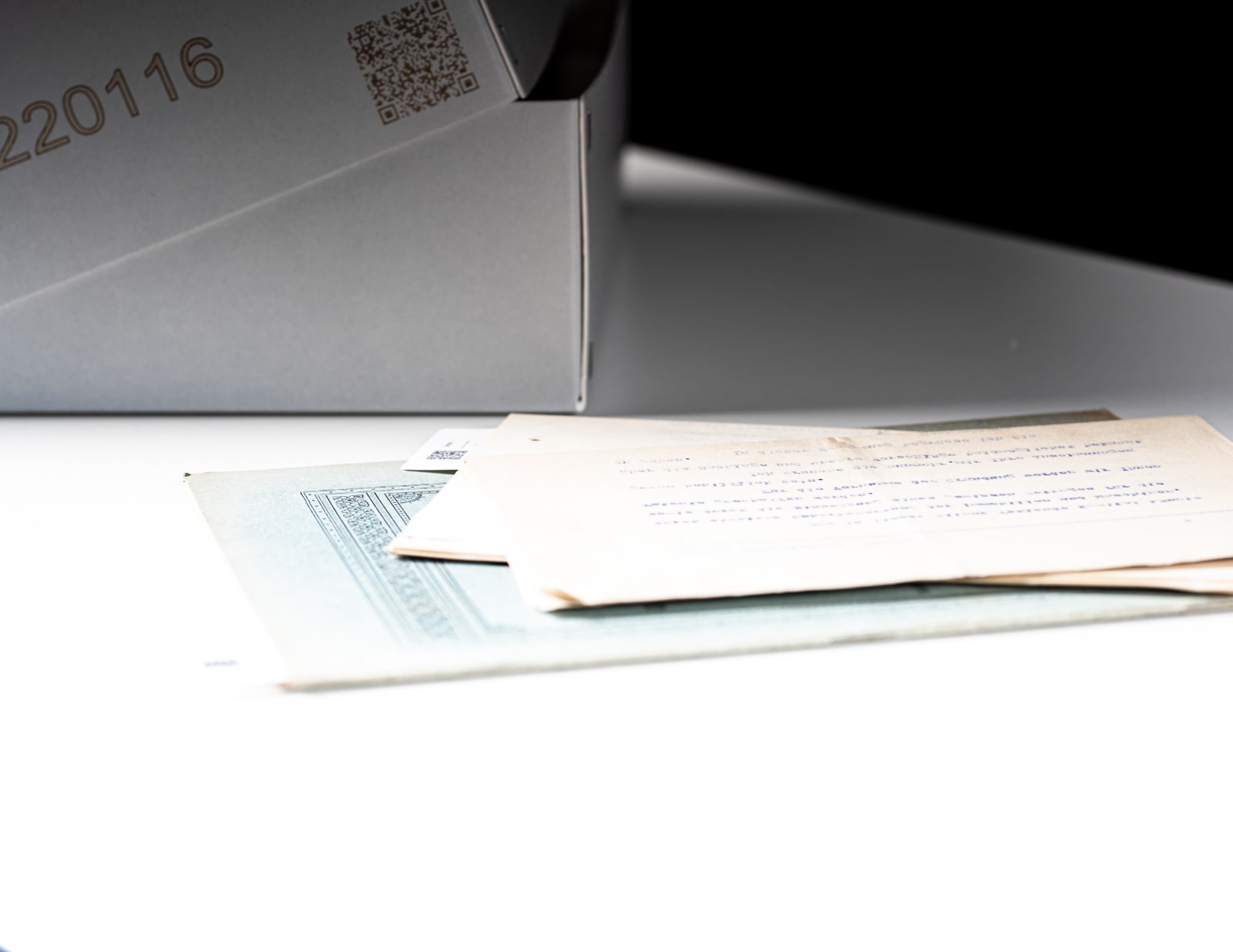remediation of documents in archives and libraries
Making damaged objects fit for use again.

After recovering and drying an object that has been damaged by water, fire or mould, additional steps are often needed before the object can be used safely.
After drying an object, we assess the damage according to the following criteria: material, object type, value, purpose, conservation status and condition prior to being damaged as well as current condition. Weighing these criteria is instrumental in selecting a treatment method for each individual object. We ask how the object will be used in future, and what condition it should be in to do so. We adapt our treatments so that – under due consideration of all factors and ethical principles – we can offer a method at an optimal cost-benefit ratio. Our computer-aided object tracking system guarantees a complete documentation of the object’s history during the entire remediation process – without changing the indexing system in the client's archives or library.
TREATMENT METHODS
We’re true to our word.
- Every object is given professional treatment – exactly as much as it needs and permits. Our efficient methods are based on the latest findings and adhere to the highest technical standards.
- We will never use sub-standard methods and materials to treat high-quality objects, and we observe the guidelines of the European Confederation of Conservator-Restorers Organisations (E.C.C.O), which prohibit any treatment that could further damage an object.
- We observe strict safety measures for dealing with contamination. Our procedures follow the standards of the Swiss Federal Office of Public Health (FOPH) and the Swiss National Accident Insurance Fund (Suva). In the case of restoration or bookbinding post-treatments, we work with specialised studios.
EXPERTISE
What we offer.
- Cleaning
- Decontamination (mould)
- Special cleaning techniques for contaminated objects (e.g. mud or soot)
- Repackaging
- Odour neutralisation after fire damage
- X-ray irradiation to treat severe mould growth (depending on the material’s category)
- Digitised inventory of damaged, contaminated objects
- Mothballing
- Long-term quarantine